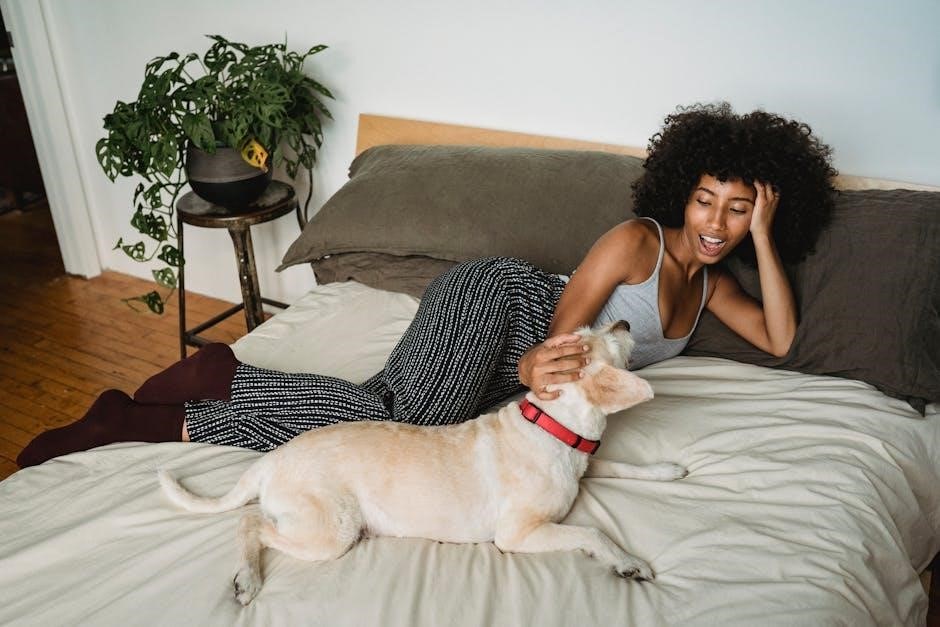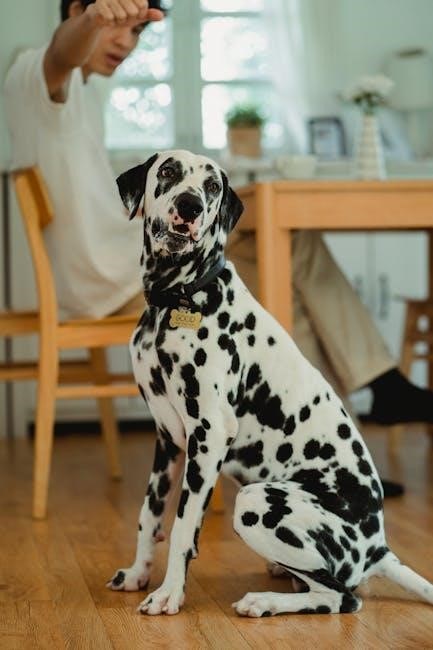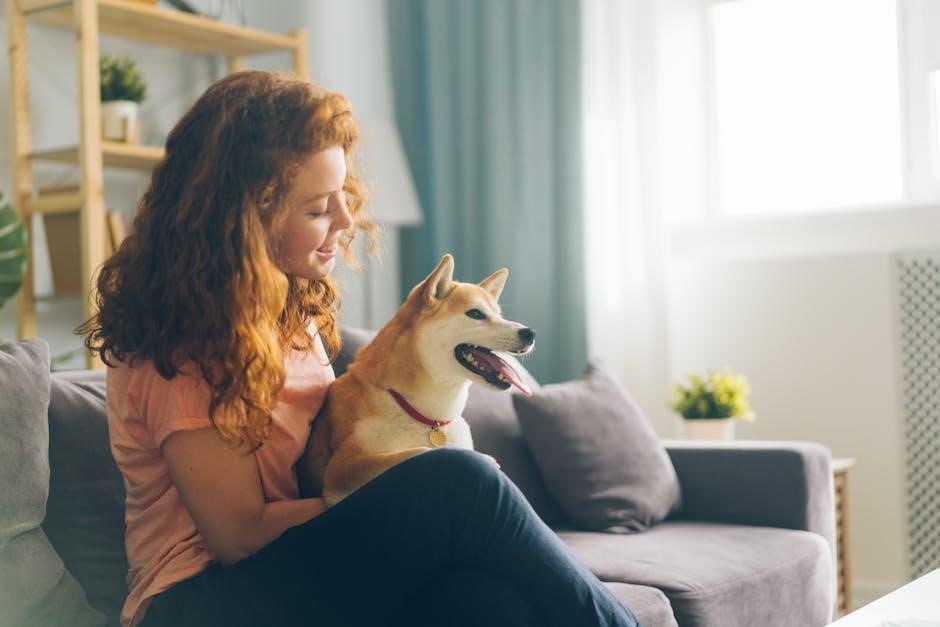Welcome to our comprehensive guide on pet-safe plants! Discover how to create a beautiful, hazard-free environment for your furry friends. Learn which plants are safe and which to avoid, ensuring your pets’ health and happiness.
Understanding the Importance of Pet-Safe Plants
Pet-safe plants are essential for creating a harmonious and safe environment for both you and your furry friends. Many common houseplants and garden flowers can be toxic to cats and dogs, causing mild to severe health issues. Even small amounts of certain plants, such as lilies or sago palms, can be life-threatening to pets. Understanding which plants are toxic and which are safe allows you to enjoy the beauty of nature while protecting your pets from harm. By choosing pet-friendly plants, you can avoid accidental poisoning and ensure your home remains a welcoming space for all family members, including your cats and dogs. Always double-check the toxicity of any plant before bringing it into your home to keep your pets safe and healthy.

Toxic Plants to Avoid
Toxic plants pose serious risks to pets, with some causing vomiting, organ damage, or even death. Common culprits include lilies, sago palms, azaleas, tulips, and castor beans. Keep these deadly plants far from your pets.
Common Toxic Plants for Dogs
Several plants pose significant risks to dogs due to their toxic properties. Lilies, for instance, are highly poisonous, with even small amounts causing severe kidney damage. Sago palms are equally dangerous, as their seeds contain cycasin, which can lead to liver failure. Tulips and daffodils, while beautiful, contain toxic compounds that can cause vomiting, diarrhea, and respiratory issues in dogs. Castor beans, found in some gardens, are also deadly, as they contain ricin, a potent toxin. Azaleas and rhododendrons can trigger gastrointestinal distress and heart issues, while oleander is toxic to the heart, leading to arrhythmias and death. Daffodils, with their toxic bulbs, can cause severe symptoms if ingested. It’s crucial for dog owners to identify and remove these plants from their environments to ensure their pets’ safety. Always double-check the ASPCA’s list of toxic plants and consult a vet immediately if ingestion occurs.
Common Toxic Plants for Cats
Cats are particularly vulnerable to certain plants, which can cause severe health issues. Lily of the valley is one of the most poisonous plants, affecting the heart, nervous system, and digestion. Chrysanthemums contain toxic compounds that can lead to vomiting, diarrhea, and skin irritation in cats. Snake plants, while popular indoors, are toxic to cats and can cause nausea and vomiting if ingested. Hemlock, a highly toxic plant, can cause seizures, tremors, and respiratory failure. Other dangerous plants include dieffenbachia, which can lead to oral and gastrointestinal irritation, and cyclamen, whose roots are toxic and can cause heart arrhythmias. Cat owners must be vigilant about these plants, as even small amounts can be harmful. Always consult a veterinarian immediately if ingestion is suspected, and consider removing these plants from your home to ensure your cat’s safety.
Safe Plants for Pets

Welcome to our guide on pet-friendly plants! Discover non-toxic options like Spider Plants, ZZ Plants, and Parlor Palms, which are safe for your furry friends. These plants bring beauty without risking your pets’ health, creating a safer, greener space for everyone.
Non-Toxic Indoor Plants for Dogs
Creating a pet-friendly home doesn’t mean sacrificing style! Many indoor plants are safe for dogs and can brighten up your space. The Spider Plant is a great option, easy to care for and perfect for hanging baskets. The ZZ Plant is another low-maintenance choice that thrives in low-light conditions, making it ideal for busy pet owners. For a touch of greenery, the Parlor Palm is non-toxic to dogs and adds a tropical vibe to any room. Other safe options include Peperomia and Polka Dot Plants, which are small, stylish, and harmless to your furry friends. These plants not only purify the air but also create a welcoming environment for both you and your dog. Always double-check plant safety before bringing them home to ensure your pets stay healthy and happy.
Pet-Friendly Houseplants for Cats
Bringing plants into your home can be a joy, but it’s essential to choose ones that are safe for your feline friends. Calathea plants are a fantastic option, with stunning leaves and no toxicity to cats. The Prayer Plant (Maranta) is another beautiful choice, offering vibrant foliage and a safe environment for your pets. For a delicate touch, African Violets are non-toxic to cats and add a pop of color to any room. Orchids are also a great pick, as they are harmless to cats and come in a variety of elegant styles. These plants not only enhance your home’s beauty but also provide peace of mind, knowing your curious cat can explore without risk. Always verify the toxicity of any plant before introducing it to your cat’s environment to ensure their health and safety.

Outdoor Plants and Safety
When designing your outdoor space, choose pet-friendly plants like Buddleia, Gerbera, and Hollyhock to ensure your garden is safe for cats and dogs. Always verify plant toxicity to protect your pets from harm.
Safe Outdoor Plants for Dogs
Creating a pet-friendly garden involves selecting plants that are safe for your furry friends. Buddleia, commonly known as Butterfly Bush, is a great choice as it attracts pollinators and is non-toxic to dogs. Gerbera daisies and Hollyhock are also excellent options, adding vibrant colors without posing risks. Nasturtium and Geraniums are similarly safe and can thrive in various outdoor conditions. These plants are not only beautiful but also ensure your dog’s safety while exploring the garden. Always double-check the toxicity of any plant before introducing it to your outdoor space to protect your pets from accidental ingestion.
Pet-Friendly Garden Plants for Cats
When designing a garden that’s safe for your feline friends, choose plants that are non-toxic and appealing to cats. Buddleia (Butterfly Bush) and Gerbera daisies are excellent options, offering vibrant blooms without posing a risk. Hollyhock and Nasturtium are also safe and add color and texture to your outdoor space. These plants are not only visually stunning but also ensure your cat’s safety while they explore. Additionally, Petunias are a great choice, as they are harmless to cats and come in a variety of colors. Always verify the toxicity of any plant before planting to protect your pets from accidental ingestion. By selecting these pet-friendly options, you can create a beautiful and secure garden environment for your cats to enjoy.
What to Do If Your Pet Ingests a Toxic Plant
If your pet ingests a toxic plant, contact your veterinarian immediately. Induce vomiting only under professional advice and avoid administering antidotes without guidance to prevent further harm.
Immediate Steps to Take
If your pet ingests a toxic plant, act quickly to minimize harm. First, contact your veterinarian or a pet poison hotline immediately for professional guidance. Do not attempt to induce vomiting unless explicitly instructed by a veterinary professional, as this can worsen the situation. Identify the plant if possible, as this helps determine the best course of action. Keep a sample of the plant or take photos for identification. Monitor your pet closely for symptoms such as vomiting, drooling, or lethargy, and report these to your vet. If severe symptoms like seizures or difficulty breathing occur, seek emergency veterinary care right away. Time is critical in preventing long-term damage or complications. Always prioritize professional advice to ensure your pet receives the appropriate treatment promptly.
